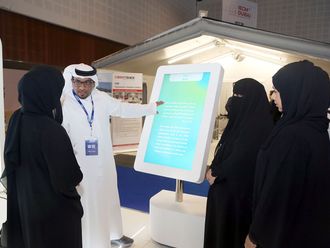Personal loans constitute a whopping 34 per cent of the $116.04 billion disbursed by GCC commercial banks, according to a report by Doha-based Gulf Organisation for Industrial Consulting (GOIC).
They were followed by trade at 24 per cent, construction 11 per cent, manufacturing and government sectors 10 per cent each, transport and communication 3 per cent, and other loans at 8 per cent.
Sectors covered included agriculture, mining, manufacturing, electricity and water, finance and real estate.
Total credit rose from $66.7 billion in 1993 to $114.46 billion in 1998.
The report cited many factors hampering GCC banks' efforts, including the predominance of traditional banking businesses, small size of the banking units and the number of branches, stringent banking laws, absence of medium- and long-term financing media, absence of comprehensive banks and scarcity of qualified national professionals.
It said banks have been ineffective in attracting the "digi-client" who is captivated by the e-trade in the new economy and expects the cyberworld to serve him best.
Banks are not expected to play the role merely of brokers but need to provide various new services and products to suit the changing economy which in turn will enable them to diversify their activities and expand locally and regionally. They also need the necessary expertise to gear up for coming challenges, it said.
"The takeoff point should be the edge point reached by the international banking industry. In this regard some banks (here) have effected positive reform especially in investing in the field of human resources development, advanced technology, and introducing new products and services," the report stated.
Despite these reforms Gulf banks continue to concentrate on traditional banking and transactions for individuals and retailers.
Personal loans dominate GCC bank lending
Personal loans constitute a whopping 34 per cent of the $116.04 billion disbursed by GCC commercial banks, according to a report by Doha-based Gulf Organisation for Industrial Consulting (GOIC).









